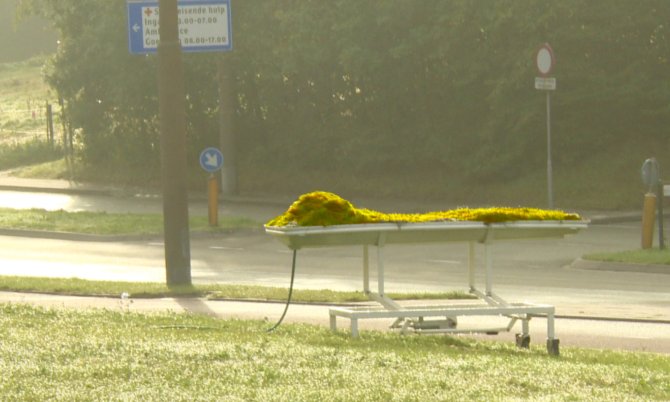
Future Cities Arnhem
In Arnhem, LfM drew attention to the local climate with a number of remarkable visual interventions, including a ‘moss stretcher’ at a local hospital. In addition, LfM organised a cycle tour with an electric cargo bike, interviewed experts on climate change and recorded visitors’ reactions on video. This footage was used for the documentary ‘The State of the Climate’ about the impact of climate change on the city.
Green infrastructure for climate-proof cities
What is the effect of trees, gardens and a park in cities on the thermal comfort? Still very little scientifically based design principles are available for urban planners on how to optimally design urban green to make urban areas in Northwestern Europe climate proof.
Wageningen UR works on defining such design principles. They will be built up by scientific knowledge on the objective and perceived impact of urban green on thermal comfort and will be tested in design sessions.
Green roofs in Tilburg
Green roofs reduce rainwater drainage to the sewer, reduce heat stress on hot days and have a lifetime two times longer than traditional roofing on flat roofs. Whether green roofs are the best option to enhance the quality of life in cities and how they actually contribute to, for example climate change adaptation, depends on the type of green roof and the local conditions. Wageningen UR explored the possibilities for Tilburg.

Evaluation of the ecosystem services of roof- and facade green
Urban green has many positive effects, the so-called ecosystem services (ESS). However, the space for urban green is increasingly limited. Application of roof and facade green therefore seems to offer good prospects for sustainable and climate-adaptive urban development. For a proper economic assessment of the costs and benefits of green roofs and facades, it is important to not only look at the individual building level, but also to weigh the impact on neighborhood and city level.